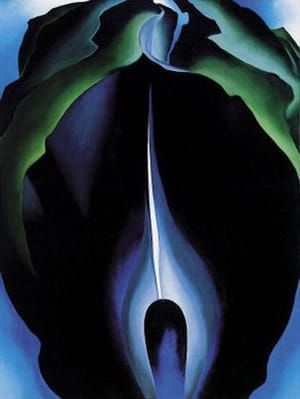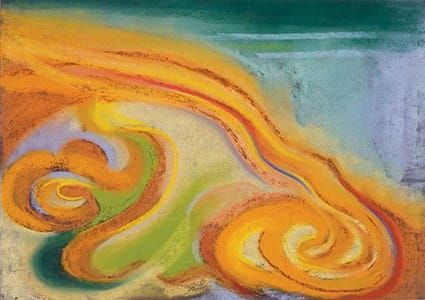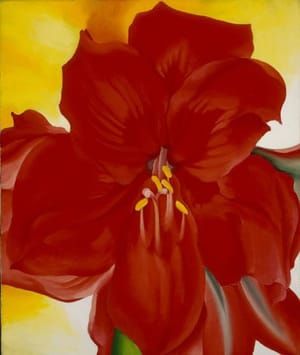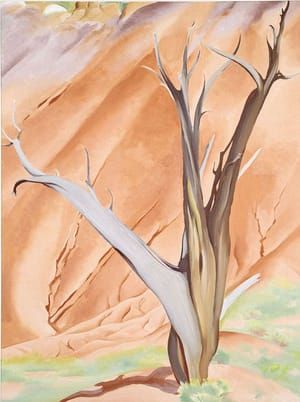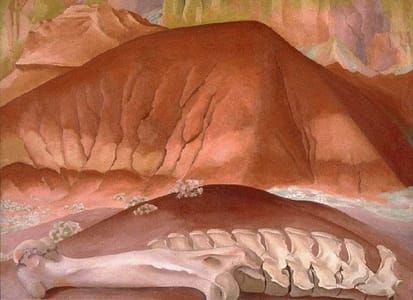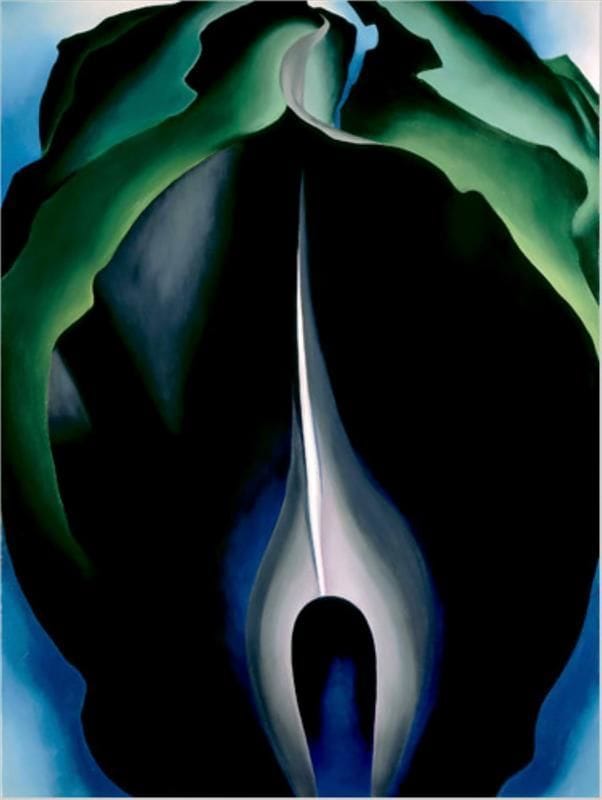

Jack in the Pulpit, No. 4, 1930
Georgia O'Keeffe
In 1930, Georgia O'Keeffe painted a series of six canvases depicting a jack-in-the-pulpit. The series begins with the striped and hooded bloom rendered with a botanist's care, continues with successively more abstract and tightly focused depictions, and ends with the essence of the jack-in-the-pulpit, a haloed black pistil standing alone against a black, purple, and gray field.
Jack-in-the-Pulpit No. IV represents a midpoint in this process of concurrently increasing detail and abstraction. If O'Keeffe consistently found her strongest inspiration in nature, she believed that the immanence of nature could be discovered in and through the refinement of form. Thus in the jack-in-the-pulpits, abstraction becomes a metaphor of, and an equivalent for, knowledge -- the closest view of the flower yields an abstract image; the most profound knowledge of the subject reveals its abstract form.
[https://www.georgiaokeeffe.net/jack-in-the-pulpit.jsp]
40 x 30 in
Uploaded on Mar 13, 2016 by Suzan Hamer
Georgia O'Keeffe
artistArthur
Wait what?

